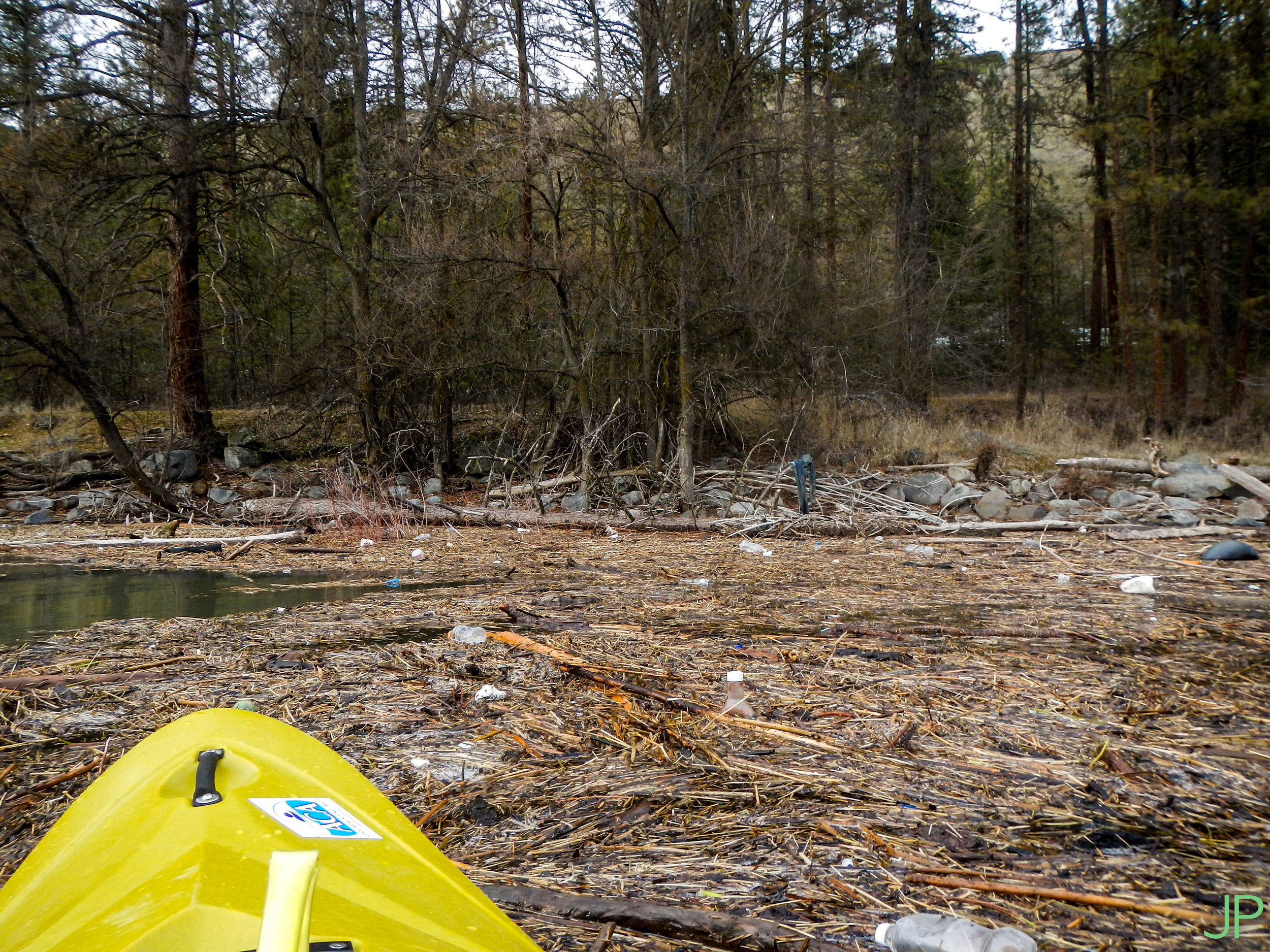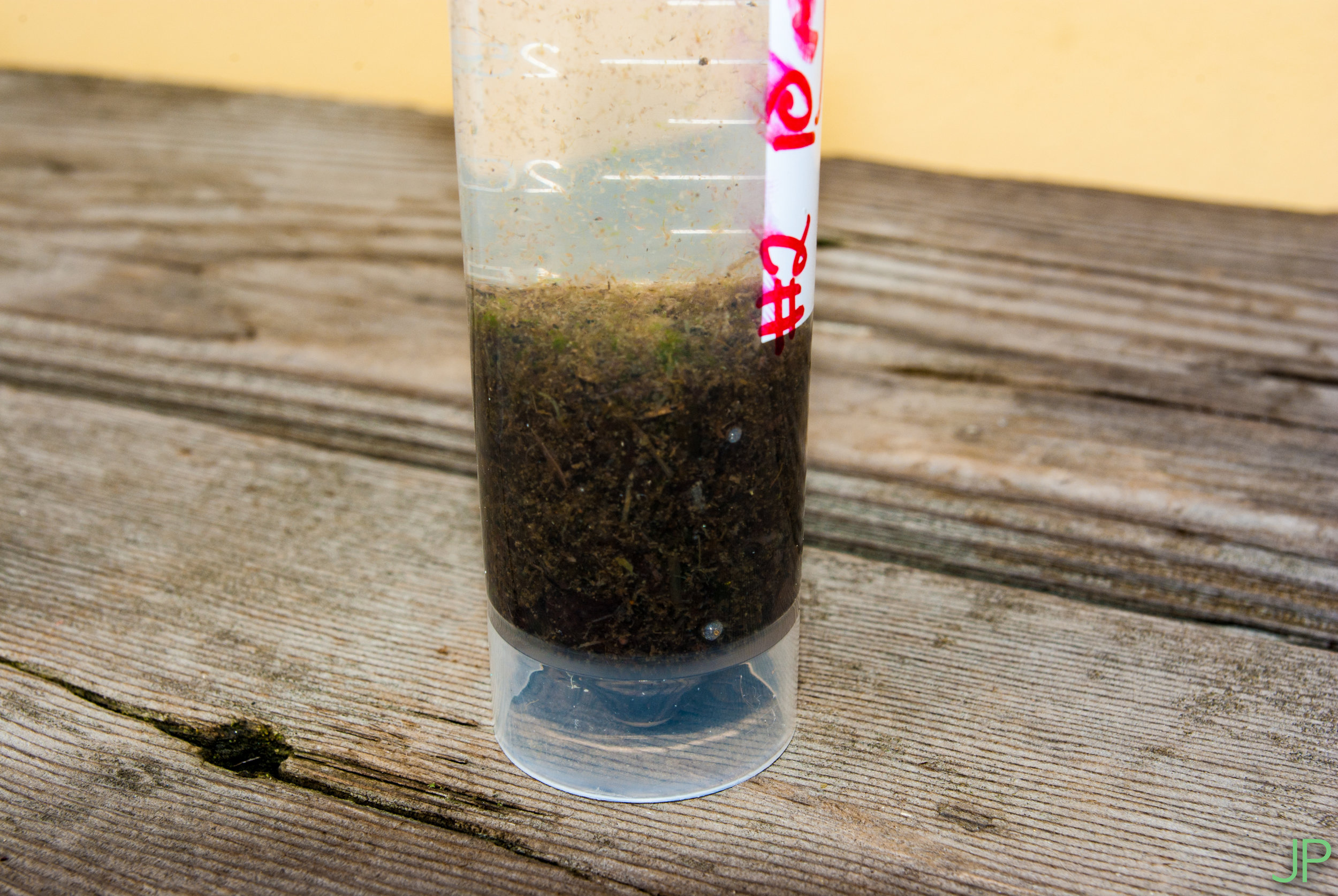Plastic pollution is a becoming a bigger and bigger problem for the planet as we produce more waste with few effective methods of handling the vast quantities produced. Typically, when people think of plastic pollutions, their minds jump to the oceans and the vast garbage patches that form. But, even local waterways struggle with the problem. The problem runs much, much deeper.
Plastic accumulates in eddies in the Spokane River, breaking down and eventually becoming microplastic.
The Spokane River is an urban river surrounded by numerous large cities. As such, plastic pollution is a constant problem. You can’t spend a day on the Spokane River without seeing it in some form. A bottle here, some styrofoam there, it's everywhere! I am an avid whitewater kayaker, raft guide, and fisherman, and seeing all this trash on the river is a big reason for me getting involved in plastics research. I wanted to know what this plastic was doing to the ecosystems I play and work on. This isn’t a problem just for the Spokane, I see plastic on almost every body of water I float.
A closeup of the debris in the eddy showing broken down plastics
So how do you see plastic’s effect on an ecosystem? You need to get small. Bottles and other large pieces of trash are a problem and unsightly, but, we don’t really get to see the relationships between plastics and life until we get microscopic. Microplastics are any pieces smaller than 5mm. At this size, they are more bioavailable for small animals to consume and permeate into the ecosystem. Some common examples include microbeads, polyethylene beads added to beauty products, fleece, and paint chips. Yes, sadly, your beloved warm layer is in fact a huge source of microplastic pollution.
Microplastics inside a living being are hugely harmful. They clog the digestive system of animals and act as a carcinogen if integrated into the body of the animal. Animals as small as zooplankton consume microplastics. They release similar chemical markers as phytoplynton, confusing the zooplankton into thinking its food. For bigger animals, microplastics are bright and flashy, which typically indicates food as well. Seabirds of all kinds are dying all over the world because of consuming plastics. And like other pollutants, microplastics will bioaccumulate up the food chain. If a trout eats those zooplankton full of microplastic, the trout will then have that microplastic in it. A recent study done on the Spokane River indicated microplastics in the gut of mountain whitefish.
Sampling for microplastics involves towing a net in the river to filter capture the microplastics.
These plastics accumulate in us as well. Plastic is appearing in important food fish and shellfish species that we rely on unfortunately, so more and more plastic is starting to appear in the human gut. Imagine the trout again but now on your dinner table. Throughout it’s life, its probably consumed thousands of zooplankton and other animals that feed on zooplankton. The fish doesn’t look so appealing now does it? Studies looking at store bought sea salt have even found trace amounts of microplastics. Even more shocking, microplastics are starting to be found in tap water all over the globe. It's fair to say plastic has permeated almost every body of water on the planet. To make the problem even worse, as plastics break down, they often release many more harmful chemicals. Microplastics also act as a transporter for other harmful chemicals like PCBs and other persistent organic pollutants (POPs). The microplastics seem to attract POPs and act as a transporter of POPs throughout the environment. Addressing the microplastic problem would be a huge step in addressing greater pollution problems we face.
Sample from a net tow taken at the Gonzaga footbridge showing the microplastic particles (white) and organic debris.
During my internship with the Riverkeeper, I am hoping to identify some of the major sources of microplastic pollution on the Spokane River. Previous studies on other drainages indicate that wastewater treatment plants are likely sources of pollution. I also suspect the Combined Sewer Overflow systems currently in place along the Spokane river are a large source of these microplastics as well. Of course, there are huge amounts of macroplastic waste that accumulates along the shore line that also adds to the problem as they break down. Identifying specific sources will be key in developing a future response plan to address the issue.
Our intern Jake Peterson, a senior at Gonzaga, will be studying microplastics in the Spokane River with us this winter and spring.





